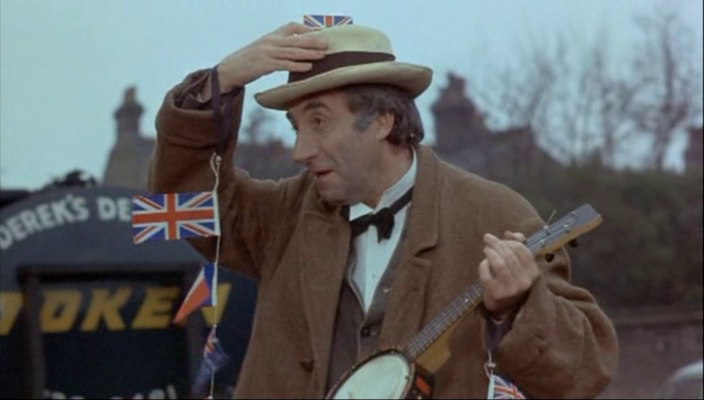
I’m not 100% but it’s entirely possible that the references to “crossing the river” in THE OPTIMISTS (OF NINE ELMS, 1973) take in Egyptian mythology about the journey to the land of the dead. At any rate, it’s a deliberately death-haunted film, with Peter Sellers in old-age makeup as an impoverished music hall entertainer befriended by a couple of scrappy kids.
Writer-director Anthony Simmons had been planning the film, based on his novel, for years — Buster Keaton was pencilled in originally. I found myself wondering how heartbreaking the film would have been with Stan Laurel — a near-impossibility, of course. Sellers is perhaps too theatrical to really move you. Here he’s walking around in a Loachian realist environment, in a Stuart Freeborn false nose and teeth (the teeth have a very subtle effect, the nose sticks out) and special hump-soled shoes to give him a rolling walk.
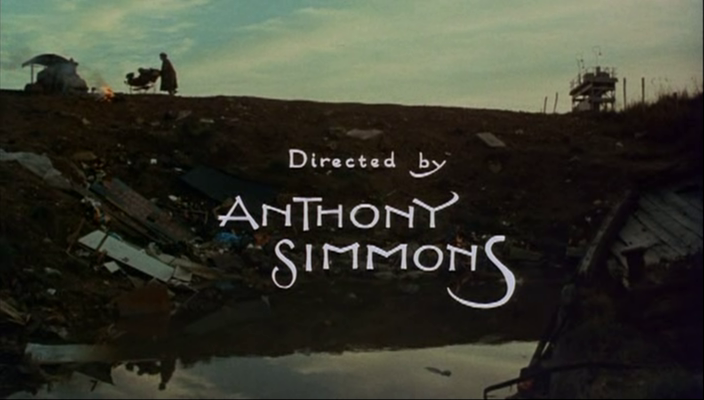
The film has some stupendous credits — George Martin scoring, Lionel Bart songwriting, though Sellers also plays some authentic old numbers his father taught him. His father also taught George Formby, and there’s a Formby standard in there — I bet nobody cleared the rights. G. Martin’s film scoring career was intermittent, but he seems to have plunged in wholeheartedly around this time, doing PULP and LIVE AND LET DIE close to it.
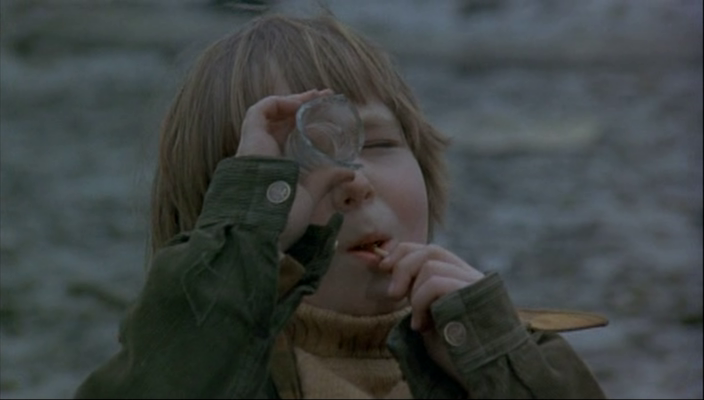
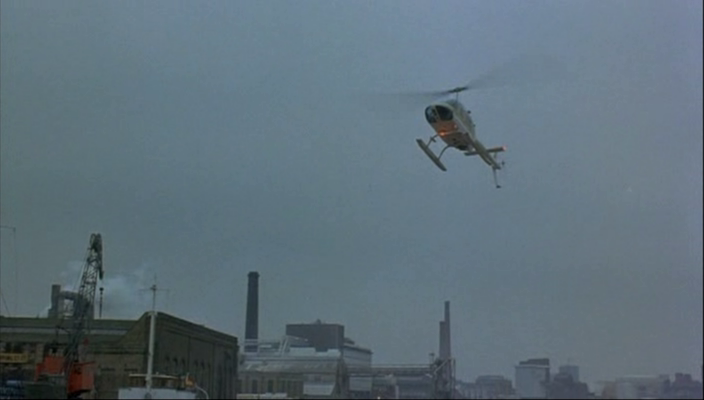
This was viewed in our weekly watch party. Regular participant Donald Wisely wisely said, “Really liked the shot early in the film of the helicopter hovering over the Thames. It looked a vision of the London that was coming, where it was all finance and property, but no actual productive industry. As a piece of understated social commentary, and possible prophetic vision of, the decline of Britain this film deserves to be better known.”
The kids are great, though their naturalism tends to point up Sellers’ schtickiness. But I guess he’s playing Old Sam as a man immersed in his old routines as a shield against bitter reality.
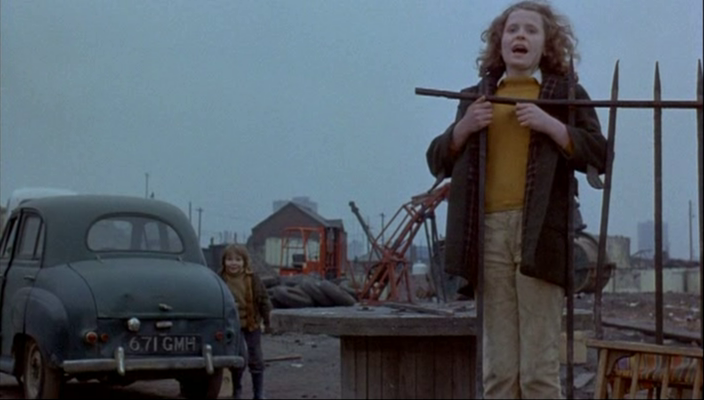
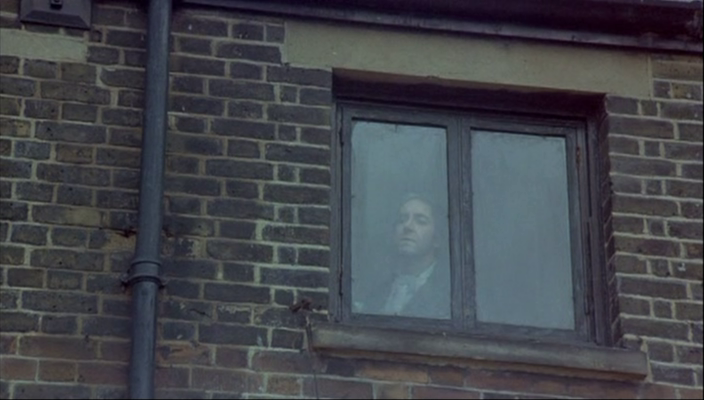
The film is about death, though Sam is still going at the end. Only the dog dies. But at one point we cut from Sellers standing in the Hyde Park Pet Cemetery — a true thing I never knew existed — to the Dorchester Hotel, where he would have a massive fatal heart attack, alone, seven years later.

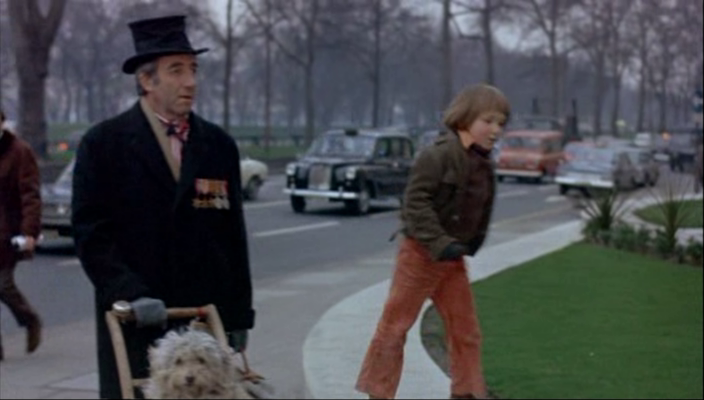
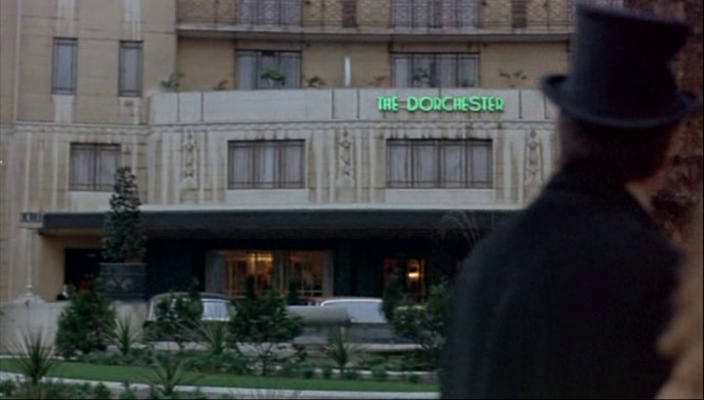
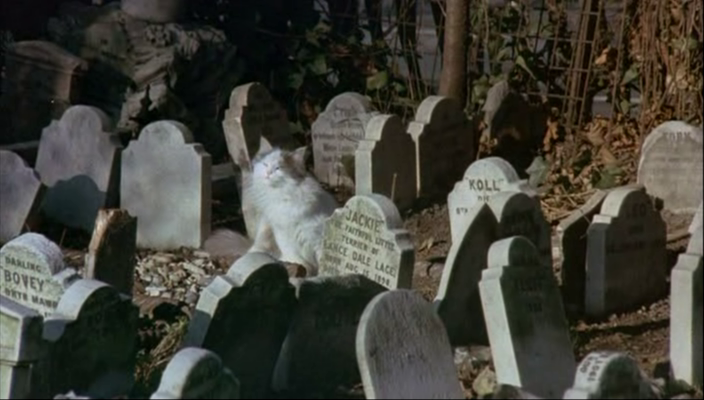
I first became convinced that Simmons knew what he was doing when the kids are playing in Thameside landfill and the little boy disappears from view. As his sister looks about frantically, every POV shot features some piece of crumbled, crushed debris that looks, for an instant, as if it could be a small boy’s body. Terrifying.
Fiona’s re-reading The Life and Death of Peter Sellers by Roger Lewis, so I picked it up and read the OPTIMISTS stuff, but of course I also turned to page seventeen. There, Lewis speculates on Sellers meeting his stand-in (or doppelganger) just before his fatal heart attack, and also mentions that Sellers had just visited Roger Moore on the set of THE MAN WHO HAUNTED HIMSELF. He notes the eerie coincidence of the film’s director, Basil “room for one more inside”, Dearden perishing in a car crash at just the same stretch of motorway where Moore’s character is killed (maybe twice). He fails to note that Moore himself was a Sellers doppelganger, even though his actual doppelganging hadn’t happened yet: in CURSE OF THE PINK PANTHER, Moore, using the pseudonym Turk Thrust, plays a reincarnated, plastically-surgeoned Inspector Clouseau.
We might pass the future scene of our own deaths a thousand times without knowing it, or shake hands with our fatal double.














